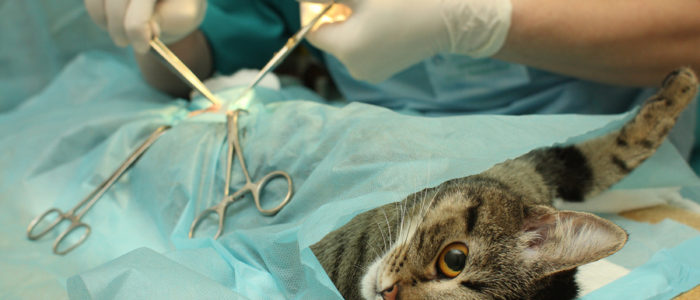ANESTHESIA AND SURGERY POLICIES
Many pet owners are understandably nervous about the prospect of their pet undergoing anesthesia and surgery. However, we take many precautions to ensure that your pet’s anesthetic and surgical experience is as safe and pain-free as possible. Below is a description of our anesthesia and surgery protocols so that you can have a better understanding of what your pet will experience while he is at our hospital.
Prior to the procedure:
- The veterinarian will perform a full physical exam on your pet.
- Bloodwork is run to check a complete blood count and basic organ function.
- An IV catheter is placed. This is used to deliver injectable anesthetics and IV fluids, and it also serves as IV access in case any emergency drugs are necessary.
- Your pet will receive an injection of a pain medication. Delivering medication prior to surgery ensures that pain is prevented rather than treated, making for a significantly less painful experience for your pet.
During the procedure:
- Your pet will be anesthetized using injectable medications, then maintained on inhalant (gas) anesthesia and oxygen.
- An endotracheal tube will be placed in your pet’s airway to allow for safe delivery of inhalant anesthesia and so that we can control his breathing if necessary.
- Your pet will be placed on IV fluids, which will help maintain his blood pressure and prevent dehydration.
- Your pet will be placed on a heating pad to prevent hypothermia.
- Your pet will be connected to several monitors so that we can continuously monitor his vital signs. Monitors include a pulse oximeter (to ensure that your pet receives enough oxygen), an EKG (to monitor heart rate and rhythm), a temperature probe, and a blood pressure monitor.
- An experienced nurse will be with your pet at all times, monitoring all of his vital signs and ensuring that he receives appropriate anesthesia.
After the procedure:
- Your pet will receive additional doses of pain medication.
- A nurse will stay with your pet until he is fully awake. Nurses will continue to intermittently monitor your pet’s vital signs until he goes home.
If you have any questions or concerns, please let us know. We want this experience to be as stress-free as possible for both you and your pet!
Part of the Unity Animal Hospital suite of handouts for patients. Written by Dr. Abby Schutzman.


Comments are closed.